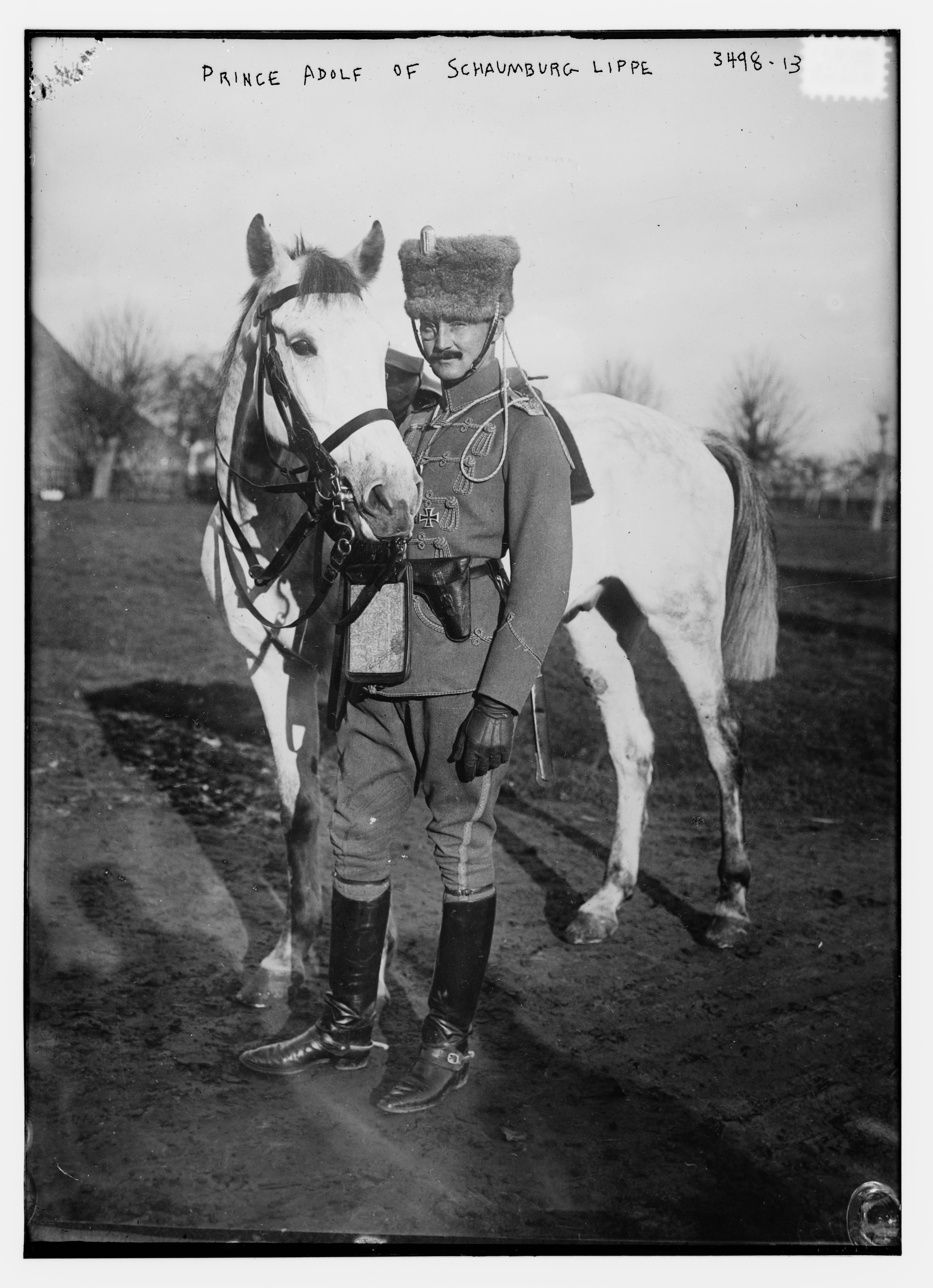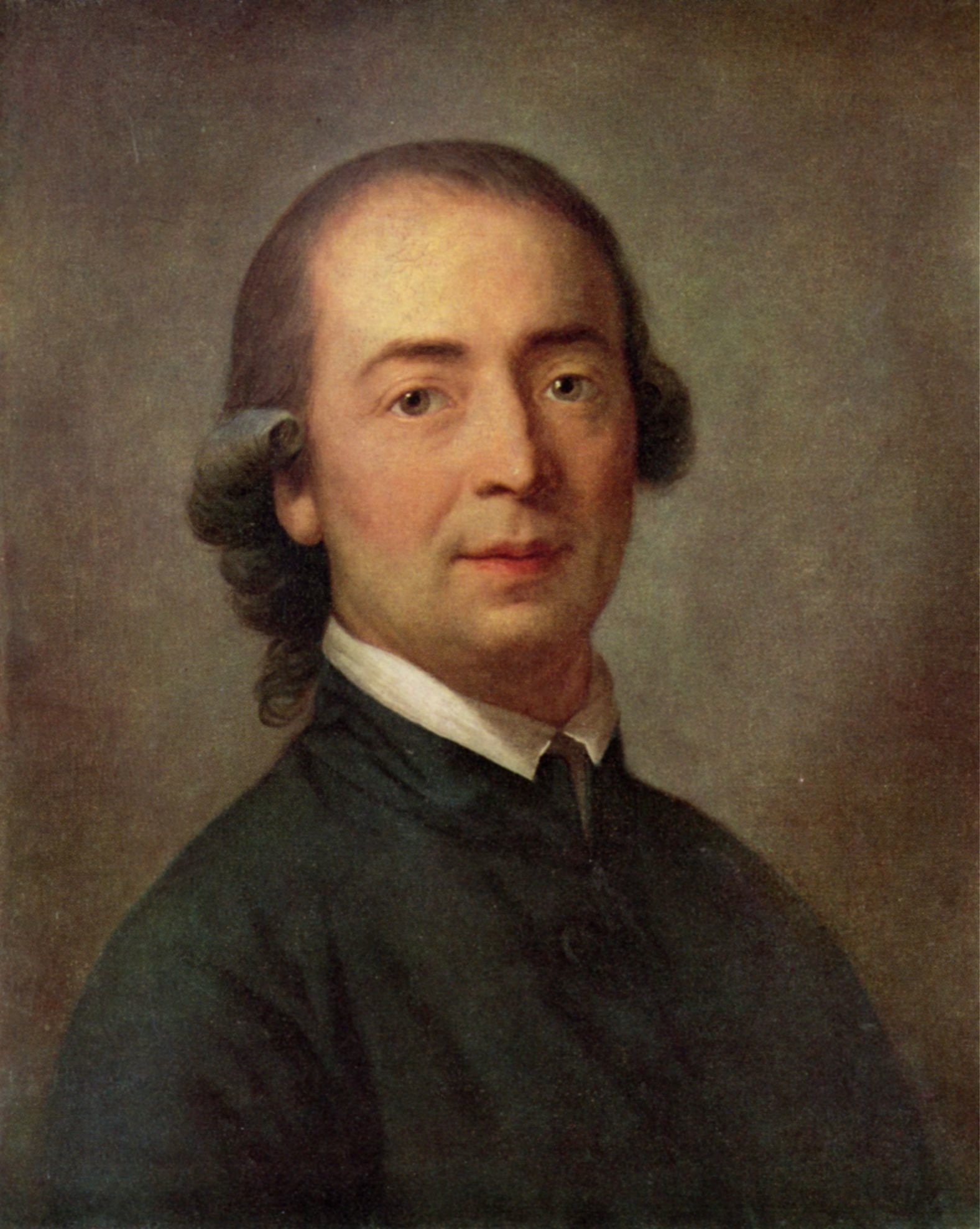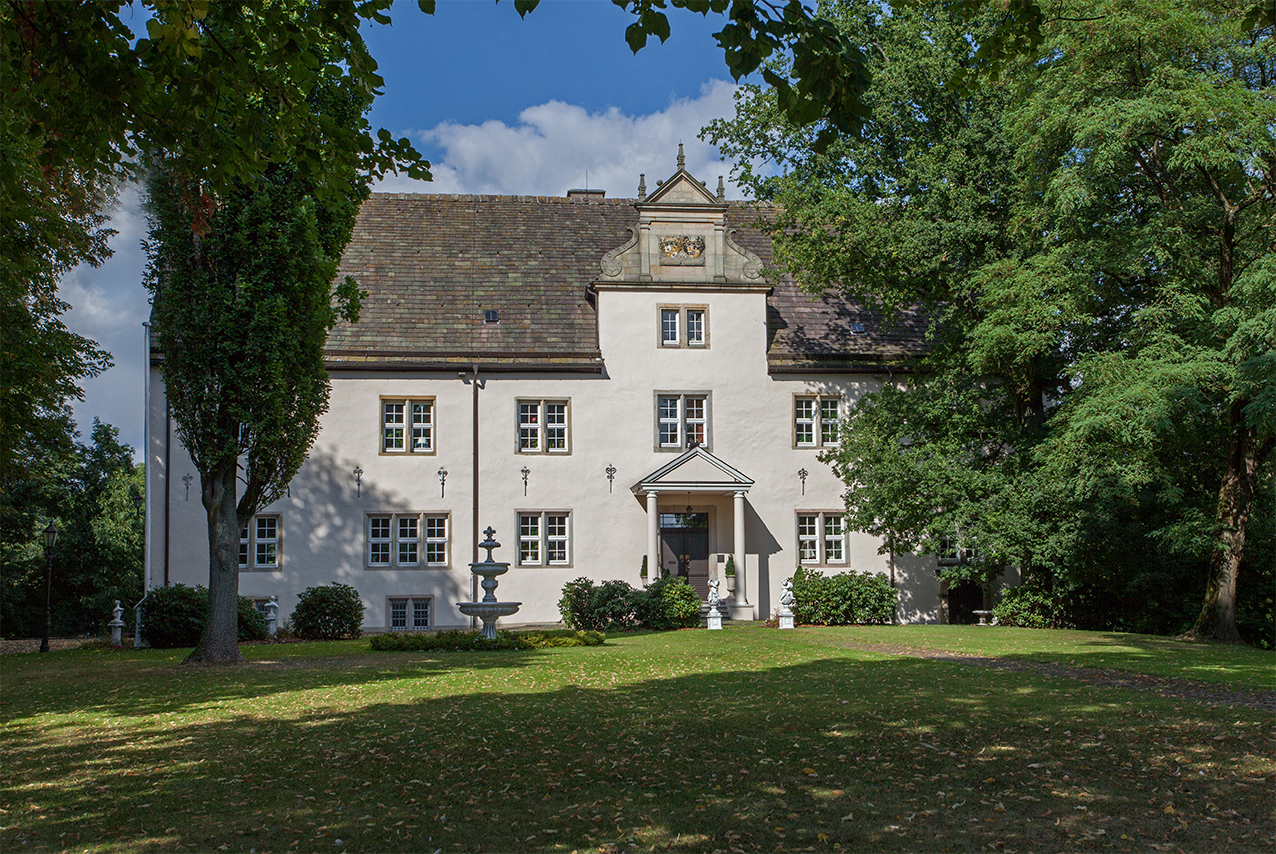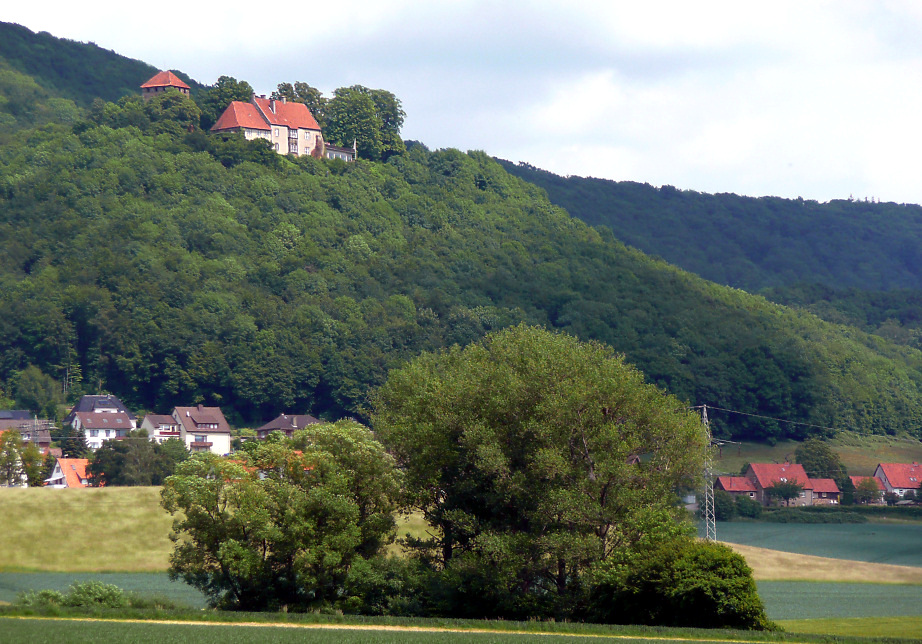|
Schaumburg-Lippe
Schaumburg-Lippe, also called Lippe-Schaumburg, was created as a county in 1647, became a principality in 1807 and a free state in 1918, and was until 1946 a small state in Germany, located in the present-day state of Lower Saxony, with its capital at Bückeburg, an area of and over 40,000 inhabitants. History Schaumburg-Lippe was formed as a county in 1647 through the division of the County of Schaumburg by treaties between the Duke of Brunswick-Lüneburg, the Landgrave of Hesse-Kassel and the Count of Principality of Lippe, Lippe. The division occurred because Count Otto V of Holstein-Schaumburg had died in 1640 leaving no male heir. Initially Schaumburg-Lippe's position was somewhat precarious: it had to share a wide variety of institutions and facilities with the County of Schaumburg (which belonged to Hesse-Kassel), including the representative assembly and the highly productive Bückeberg mines, and the Landgrave of Hesse-Kassel retained some feudal rights over it. It w ... [...More Info...] [...Related Items...] OR: [Wikipedia] [Google] [Baidu] |
George William, Prince Of Schaumburg-Lippe
Georg Wilhelm, Prince of Schaumburg-Lippe (20 December 1784 – 21 November 1860) was a Count and later Prince of Schaumburg-Lippe. Biography He was born in Bückeburg the son of Philipp II, Count of Schaumburg-Lippe, and his second wife Princess Juliane of Hesse-Philippsthal (1761–1799). He succeeded his father as Count of Schaumburg-Lippe on 13 February 1787, but due to his age his mother Princess Juliane acted as regent. However Landgrave William IX of Hesse-Kassel (or Hesse-Cassel) occupied all of Schaumburg-Lippe except for Wilhelmstein, after invading it to enforce his claim to Schaumburg-Lippe based on Princess Juliane's supposed morganatic ancestry. The Imperial Court in Vienna however ruled in favour of Georg Wilhelm and ordered Landgrave William IX to withdraw, which he did after a two-month occupation. Schaumburg-Lippe joined the Confederation of the Rhine on 15 December 1807 and was raised to a principality: Georg Wilhelm became the first Prince of Schaumburg- ... [...More Info...] [...Related Items...] OR: [Wikipedia] [Google] [Baidu] |
Adolf II, Prince Of Schaumburg-Lippe
Adolf II (23 February 1883 – 26 March 1936) was the last ruler of the small Principality of Schaumburg-Lippe in northwestern Germany from 29 April 1911 until his abdication on 15 November 1918. Adolf was the eldest son of Georg, Prince of Schaumburg-Lippe, and succeeded his father as prince on 29 April 1911. His short reign came to an end seven years later when he was forced to abdicate on 15 November 1918 following the German revolution. He and his wife were both killed in a plane crash in Mexico on 26 March 1936. As he had no children, Adolf was succeeded as head of the House of Schaumburg-Lippe by his younger brother Wolrad, Prince of Schaumburg-Lippe, Wolrad. Biography Early life Adolf was born in Stadthagen, the only other town in the principality apart from the capital Bückeburg, to the then hereditary Georg, Prince of Schaumburg-Lippe, Prince Georg (1846–1911) and Princess Marie Anne of Saxe-Altenburg (1864–1918). He was born during the reign of his grandfather A ... [...More Info...] [...Related Items...] OR: [Wikipedia] [Google] [Baidu] |
Free State Of Schaumburg-Lippe
The Free State of Schaumburg-Lippe () was created following the abdication of Prince Adolf II of the Principality of Schaumburg-Lippe on 15 November 1918, following the German Revolution. It was a state in Germany during the Weimar Republic and Nazi Germany. The democratic government was suppressed during Nazi rule. At the end of the Second World War, the British military occupation government decreed on 1 November 1946 the union of Schaumburg-Lippe, Hannover, Braunschweig and Oldenburg to form the new state of Lower Saxony. Government The state parliament consisted of a ''Landtag'' of 15 members elected for a term of three years by universal suffrage. The state administration, headed by a ''Staatsrat'' (State Councillor), was responsible to the ''Landtag'' and could be removed by a vote of no confidence. For most of the Weimar period, the state coalition governments usually were headed by a Social Democrat or a non-partisan technocrat. Following their seizure of p ... [...More Info...] [...Related Items...] OR: [Wikipedia] [Google] [Baidu] |
Bückeburg
Bückeburg (; Northern Low Saxon: ''Bückeborg'') is a town in Lower Saxony, Germany, on the border with North Rhine Westphalia. It is located in the district of Schaumburg close to the northern slopes of the Weserbergland ridge. Bückeburg has a population of 21,030. History Until the German Revolution of 1918–1919, Bückeburg was the capital of the tiny principality of Schaumburg-Lippe. Schaumburg-Lippe continued to be an independent German state ( Free state) until 1946. Houses began to gather around the castle and were protected by a city wall in the 17th century. In the 19th century, it was connected to the Minden and Hanover Railway and housed a synagogue. The poet J. G. von Herder was court preacher here from 1771 to 1776. Bückeburg is a former British garrison town and had a number of British residents until recently. Most of the British residents worked at the British Military Hospital (BMH) in Rinteln, or in the local English Prince Rupert School, als ... [...More Info...] [...Related Items...] OR: [Wikipedia] [Google] [Baidu] |
Wilhelm, Count Of Schaumburg-Lippe
Wilhelm, Count of Schaumburg-Lippe-Bückeburg (9 January 1724 – 10 September 1777), born Friedrich Wilhelm Ernst Graf zu Schaumburg-Lippe-Bückeburg, was a German ruler of the County of Schaumburg-Lippe-Bückeburg, an important military commander in the Seven Years' War, Generalfeldzeugmeister of the Electorate of Brunswick-Lüneburg, a British field marshal (Generalfeldmarschall) and the grandson of George I of Great Britain. Biography He was born in London the son of Albrecht Wolfgang, Count of Schaumburg-Lippe and of his first wife Countess Margarete Gertrud of Oeynhausen (1701–1726), an alleged bastard daughter of George I of Great Britain and his mistress Ehrengard Melusine von der Schulenburg. He accompanied his father in his campaign in Dutch service during the 1740-1748 War of Austrian Succession, and was present at the Battle of Dettingen (1743). He then fought in Austrian service in their Italian campaign. He succeeded his father as Count on 25 October 1748. Se ... [...More Info...] [...Related Items...] OR: [Wikipedia] [Google] [Baidu] |
Friedrich Christian, Count Of Schaumburg-Lippe
Friedrich Christian, Count of Schaumburg-Lippe (16 August 1655 – 13 June 1728) was the second ruler of the County of Schaumburg-Lippe. Biography He was born in Bückeburg, the son of Philip I, Count of Schaumburg-Lippe and Landgravine Sophie of Hesse-Kassel (or Hesse-Cassel) (1615–1670). He became Count on his father's death on 10 April 1681, and reigned until his death at Bückeburg. He was succeeded by his elder surviving son Albert Wolfgang. Marriage and children He was married on 4 January 1691 at Langenburg to Countess Johanna Sophia of Hohenlohe-Langenburg (1673–1743). They divorced in 1723. They had six children: *Count Friedrich August (1693–1694) *Count Wilhelm Ludwig (1695–1695) *Countess Sophie Charlotte (1696–1697) *Count Philipp (1698–1698) *Count Albert Wolfgang (1699–1748) *Count Friedrich (1702–1776) On 3 December 1725 at Brixen, he subsequently married his mistress, Maria Anna Victoria von Gall (1707–1760), daughter of Johann Michael ... [...More Info...] [...Related Items...] OR: [Wikipedia] [Google] [Baidu] |
Lower Saxony
Lower Saxony is a States of Germany, German state (') in Northern Germany, northwestern Germany. It is the second-largest state by land area, with , and fourth-largest in population (8 million in 2021) among the 16 ' of the Germany, Federal Republic of Germany. In rural areas, Northern Low Saxon and Saterland Frisian language, Saterland Frisian are still spoken, though by declining numbers of people. Lower Saxony borders on (from north and clockwise) the North Sea, the states of Schleswig-Holstein, Hamburg, , Brandenburg, Saxony-Anhalt, Thuringia, Hesse and North Rhine-Westphalia, and the Netherlands. Furthermore, the Bremen (state), state of Bremen forms two enclaves within Lower Saxony, one being the city of Bremen, the other its seaport, Bremerhaven (which is a semi-exclave, as it has a coastline). Lower Saxony thus borders more neighbours than any other single '. The state's largest cities are the state capital Hanover, Braunschweig (Brunswick), Oldenburg (city), Oldenburg, ... [...More Info...] [...Related Items...] OR: [Wikipedia] [Google] [Baidu] |
Lippe-Alverdissen
Lippe-Alverdissen was a German County of the ruling House of Lippe. The branch was created in 1613 following the death of Count Simon VI of Lippe, with his realm being split between his three sons with his youngest son Philipp Philipp is both a surname and a given name. Notable people with the name include: "Philipp" has also been a shortened version of Philippson, a German surname especially prevalent amongst German Jews and Dutch Jews. Surname * Adolf Philipp (18 ... receiving the estate of Alverdissen (near Barntrup). Following Count Philipp's ascension as Count of Schaumburg-Lippe in 1643, Alverdissen became a property of the now ruling branch of Schaumburg-Lippe. Following the death of Count Philipp in 1681 Schaumburg-Lippe went to his eldest son Friedrich Christian who built the existing Renaissance castle at Alverdissen and later ceded it to his brother Philip Ernest who founded the Schaumburg-Lippe-Alverdissen line. The two lines remained separate until Phili ... [...More Info...] [...Related Items...] OR: [Wikipedia] [Google] [Baidu] |
Stadthagen
Stadthagen () is the capital of the district of Landkreis Schaumburg, Schaumburg, in Lower Saxony, Germany. It is situated approximately 20 km east of Minden and 40 km west of Hanover. The city consists of the districts Brandenburg, Enzen-Hobbensen, Hörkamp-Langenbruch, Krebshagen, Obernwöhren, Probsthagen, Reinsen and Wendthagen-Ehlen. Earlier, there were also the districts Habichhorst, Bruchhof, Blyinghausen, Enzen and Hobbensen. Stadthagen is located on the German Timber-Frame Road. History Count Adolf III of Holstein, Adolf III of County of Holstein, Holstein created a new settlement at the foot of the Bückeberg around 1224. Its site near the Hellweg route testifies to his strategic and commercial wisdom. After the successful clearances of the Dülwald forest around 1224, a new settlement by the name of ''indago comitis'' (the count's enclosure - the same name as The Hague) was first recorded in 1244 when it was described as a city and fort. In 1287 the town change ... [...More Info...] [...Related Items...] OR: [Wikipedia] [Google] [Baidu] |
County Of Schaumburg
The County of Schaumburg (), until ca. 1485 known as Schauenburg, was a state of the Holy Roman Empire, located in the present German state of Lower Saxony. Its territory was more or less congruent with the present district . History Schaumburg originated as a medieval county, which was founded at the beginning of the 12th century. It was named after Schauenburg Castle, near Rinteln on the Weser, where the owners started calling themselves Lords (from 1295 Counts) of Schauenburg. Adolf I probably became the first Lord of Schauenburg in 1106. In 1110, Adolf I, Lord of Schauenburg was appointed by Lothair, Duke of Saxony to hold Holstein and Stormarn, including Hamburg, as fiefs.Lemma Schauenburg/Schaumburg. In: Klaus-Joachim Lorenzen-Schmidt, Ortwin Pelc (Hrsg.): ''Schleswig-Holstein Lexikon''. 2. Aufl., Wachholtz, Neumünster, 2006. Subsequently, the House of Schaumburg were also counts of Holstein and its partitions Holstein-Itzehoe, Holstein-Kiel, Holstein-Pinneb ... [...More Info...] [...Related Items...] OR: [Wikipedia] [Google] [Baidu] |
Principality Of Lippe
Lippe (later Lippe-Detmold and then again Lippe) was a state in Germany, ruled by the House of Lippe. It was located between the Weser river and the southeast part of the Teutoburg Forest. It originated as a state during the Holy Roman Empire, and was promoted to the status of principality in 1789. During this period the ruling house split into a number of branches, with the main line residing at Detmold. During the Reformation, Lippe had converted to Lutheranism in 1538 and then to Calvinism in 1604. From the demise of the empire in 1806, the principality was independent, but it joined the North German Confederation in 1866 and became one of the States of the German Empire in 1871. Over the course of the nineteenth century it gradually developed into a constitutional monarchy with moderate participation in government for the landed nobility. Its economy was overwhelmingly agrarian and among the weakest in the German Empire. After the last prince abdicated in 1918, it continued a ... [...More Info...] [...Related Items...] OR: [Wikipedia] [Google] [Baidu] |
German Confederation
The German Confederation ( ) was an association of 39 predominantly German-speaking sovereign states in Central Europe. It was created by the Congress of Vienna in 1815 as a replacement of the former Holy Roman Empire, which had been dissolved in 1806 as a result of the Napoleonic Wars. The Confederation had only one organ, the '' Bundesversammlung'', or Federal Convention (also Federal Assembly or Confederate Diet). The Convention consisted of the representatives of the member states. The most important issues had to be decided on unanimously. The Convention was presided over by the representative of Austria. This was a formality, however, as the Confederation did not have a head of state, since it was not a state. The Confederation, on the one hand, was a strong alliance between its member states because federal law was superior to state law (the decisions of the Federal Convention were binding for the member states). Additionally, the Confederation had been established for ... [...More Info...] [...Related Items...] OR: [Wikipedia] [Google] [Baidu] |








